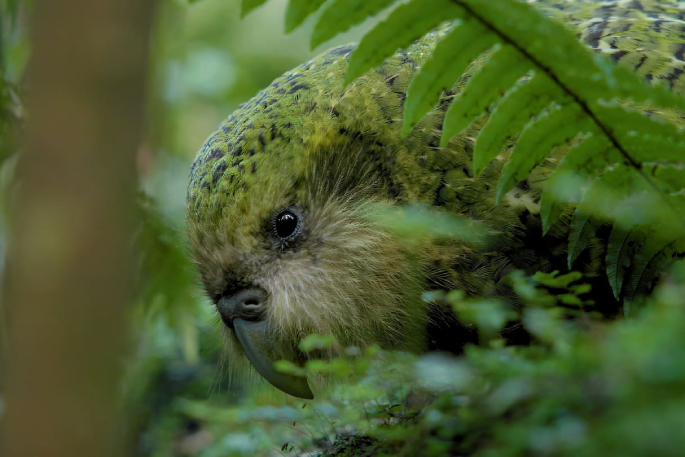New Zealand’s Kākāpō population has declined to 244 after three birds, Ranger, Madeline and Ōtepoti, died this month.
The Kākāpō Recovery team said the deaths were unrelated.
Five-year-old male Ōtepoti was a former Waikato resident and trailblazer as he was one of the first kākāpō to live on the mainland in almost four decades when he was transferred to Sanctuary Mountain Maungatautari.
He did well at the sanctuary and took part in a climbing trial that revealed how the clever birds escape the sanctuary. However, in June, the team made the decision to return Ōtepoti to one of the offshore islands on the South Island after he breached the sanctuary’s fence twice.
At his scheduled health check earlier last week, Ōtepoti was found underweight and unwell.
He was immediately transferred to Dunedin Wildlife Hospital for care. He had initially appeared stable but was found dead on Friday morning.
“His cause of death is unknown. We hope to know more once we have results back from samples that have been sent for testing,” the Kākāpō Recovery team said on social media.
Sanctuary Mountain Maungatautari general manager Helen Hughes said the team at the maunga was very sad to hear about Ōtepoti’s passing.
“It’s just devastating,” Hughes said.
“You see, he’s the little man that’s on all our videos and photos... He was very adventurous... and - as all kākāpō - highly treasured.
“The team is really invested [in the kākāpō] and even though he has gone back to the island down south in June, there is a deep connection and relationship with the team here at the maunga.”
Hughes said the team was currently working through details on how they would pay tribute to Ōtepoti and give him “a little send-off”.
Meanwhile, 2-year-old female Madeline had been in care at Dunedin Wildlife Hospital since she was found with a severe beak injury in July.
Over 10 weeks, Madeline underwent scans and tests while being monitored closely.
With support from international avian vets, it was determined that the damage to her beak was permanent and beyond repair.
“This, coupled with overall health decline, meant euthanasia was the only option,” the Kākāpō Recovery team said on social media.
Madeline was the result of artificial insemination with Sinbad and Margaret-Maree in the 2022 breeding season. Her grandfather was Richard Henry, the last surviving Fiordland kākāpō, so she was a bird of “high genetic value”.
At the start of this month, the Kākāpō Recovery team received a mortality signal for a male bird named Ranger on Pukenui Anchor Island. He was found amongst a fallen tree, seemingly killed in a large windfall.
Ranger was 5 years old and known for his distinctive narrow face with endearing, deep-set eyes.
Ngāi Tahu Representative on the Kākāpō Recovery Group Tāne Davis said it was “tremendously sad” to lose three kākāpō in such a short space of time.
“Unfortunately, injuries and illnesses are some of the forces of nature that we are up against when working with these manu,” he said.
“As per tikanga, we had a Ngāi Tahu representative attend the [Dunedin Wildlife] hospital to perform karakia following the passing of Madeline and Ōtepoti.
“I would like to acknowledge the ... hospital staff who tried their best to repair Madeline’s beak and cared for Ōtepoti when he was discovered to be unwell.”
Department of Conservation kākāpō operations manager Deidre Vercoe said with less than 250 birds, the kākāpō population was critically endangered.
“While a level of mortality is to be expected in any population, the recent loss of three birds... over the last month is a reminder of their vulnerability,” Vercoe said.
“The next kākāpō breeding season is predicted to be in 2026 and we look forward to this opportunity to support the growth of the population.
“Until then we will continue to monitor the population with remote technologies and via annual health checks.”
Danielle Zollickhofer is a multimedia journalist and assistant news director at the Waikato Herald. She joined NZME in 2021 and is based in Hamilton.



1 comment
Once they are gone...!
Posted on 26-09-2024 15:11 | By Watchdog
...they are gone. We sure will miss these lovable birds. So we need to keep on helping them along.
Leave a Comment
You must be logged in to make a comment.